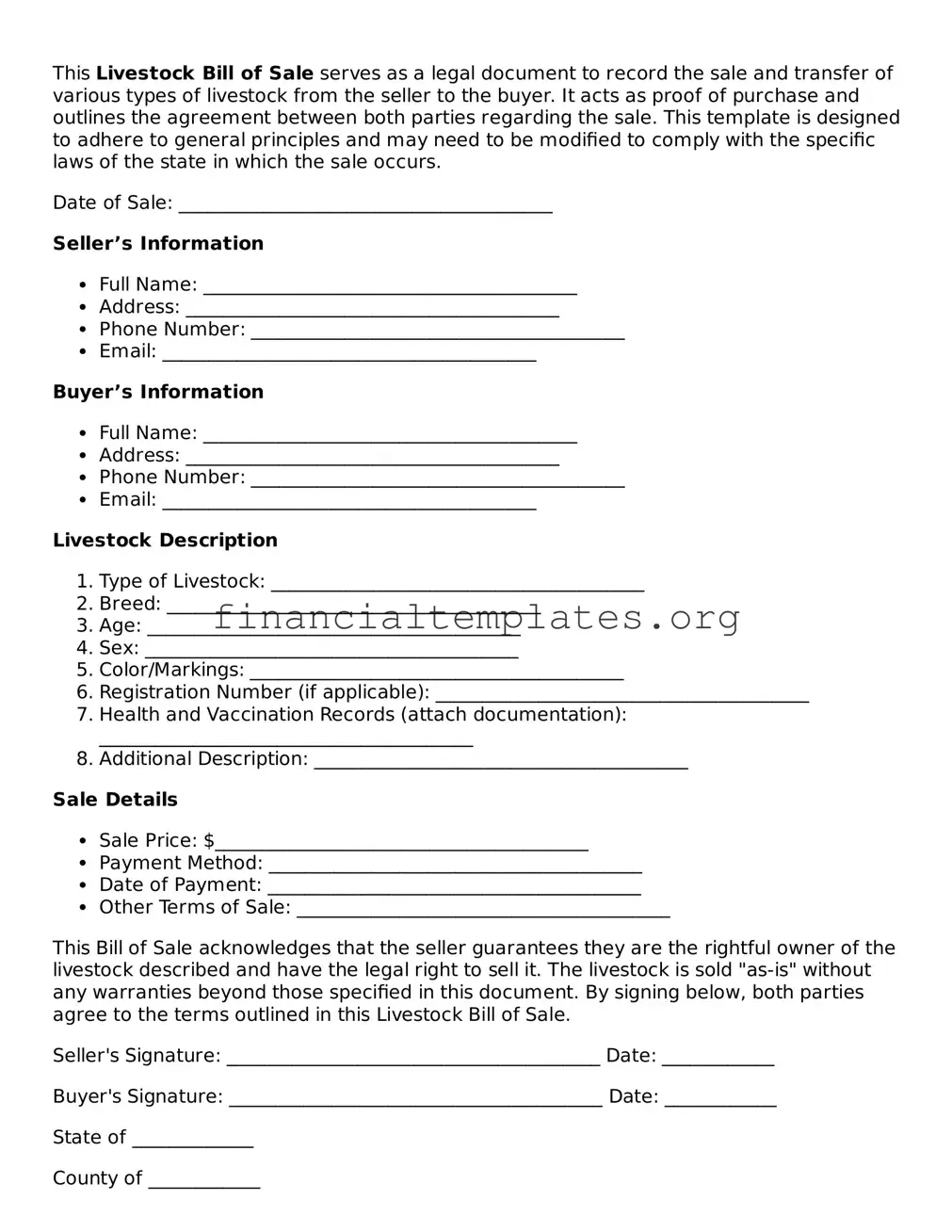The Livestock Bill of Sale Form closely resembles the Vehicle Bill of Sale in its function and structure. Both documents serve as legal proofs of sale and transfer of ownership between a seller and a buyer. The key similarity lies in their purpose: to document the transaction details such as the date of sale, the sale amount, and identification specifics - for vehicles, it's the make, model, and VIN; for livestock, it's usually the breed, sex, and sometimes unique identifiers like ear tags.
Similarly, the Equipment Bill of Sale shares a purpose with the Livestock Bill of Sale, as it documents the sale and transfer of ownership of equipment. Both forms include crucial details about the items sold, including descriptions, condition, and sale price, ensuring both parties have a record of what was agreed upon. This is especially important for tax and warranty purposes, making sure both the buyer's and seller's interests are protected.
The General Bill of Sale is another parallel document, albeit a more versatile one. It can be used for transactions involving a wide array of items, not limited to vehicles, equipment, or livestock. What makes it similar to the Livestock Bill of Sale is its role in confirming and recording a sale's specifics, safeguarding both parties against disputes by clearly outlining what was sold, for how much, and under what conditions.
The Real Estate Bill of Sale, while primarily focused on the conveyance of property rather than movable goods, shares the underlying principle of documenting a transaction. Like its livestock counterpart, it legally records the details of the sale, such as the property description, price, and any terms and conditions agreed upon by the parties involved, thus formalizing the transfer of ownership.
The Business Bill of Sale is akin to the Livestock Bill of Sale in that it formalizes the sale of business assets or ownership interests from one party to another. This document specifies the assets being sold, including physical items and intangible assets, much like the livestock form details the animals being transferred. This ensures a clear understanding and agreement, which is crucial for the smooth continuation or transition of business operations.
A Promissory Note, while not a bill of sale, complements it in transactions where the buyer does not pay the entire amount upfront. It outlines the buyer's promise to pay the remaining amount, detailing the repayment schedule, interest rates, and what happens in case of non-payment. This ties closely to the Livestock Bill of Sale when livestock purchases are financed over time, ensuring both parties have clear expectations regarding payment terms.
The Warranty Deed is used in real estate to guarantee that the seller holds clear title to the property and has the right to sell it, similar to how the Livestock Bill of Sale assures the buyer that the seller legally owns the livestock and has the right to sell them. Both documents protect the buyer's interests by certifying the seller's authority to sell and transfer ownership free and clear of encumbrances.
Lastly, the Quitclaim Deed, which transfers a seller's interest in property without making any promises about the property's clear title, contrasts with the Livestock Bill of Sale's detailed assurances regarding the animals in question. However, they both serve to effectuate the transfer of ownership rights from one party to another, underscoring their principal objective of documenting the change in ownership in a legal context.
